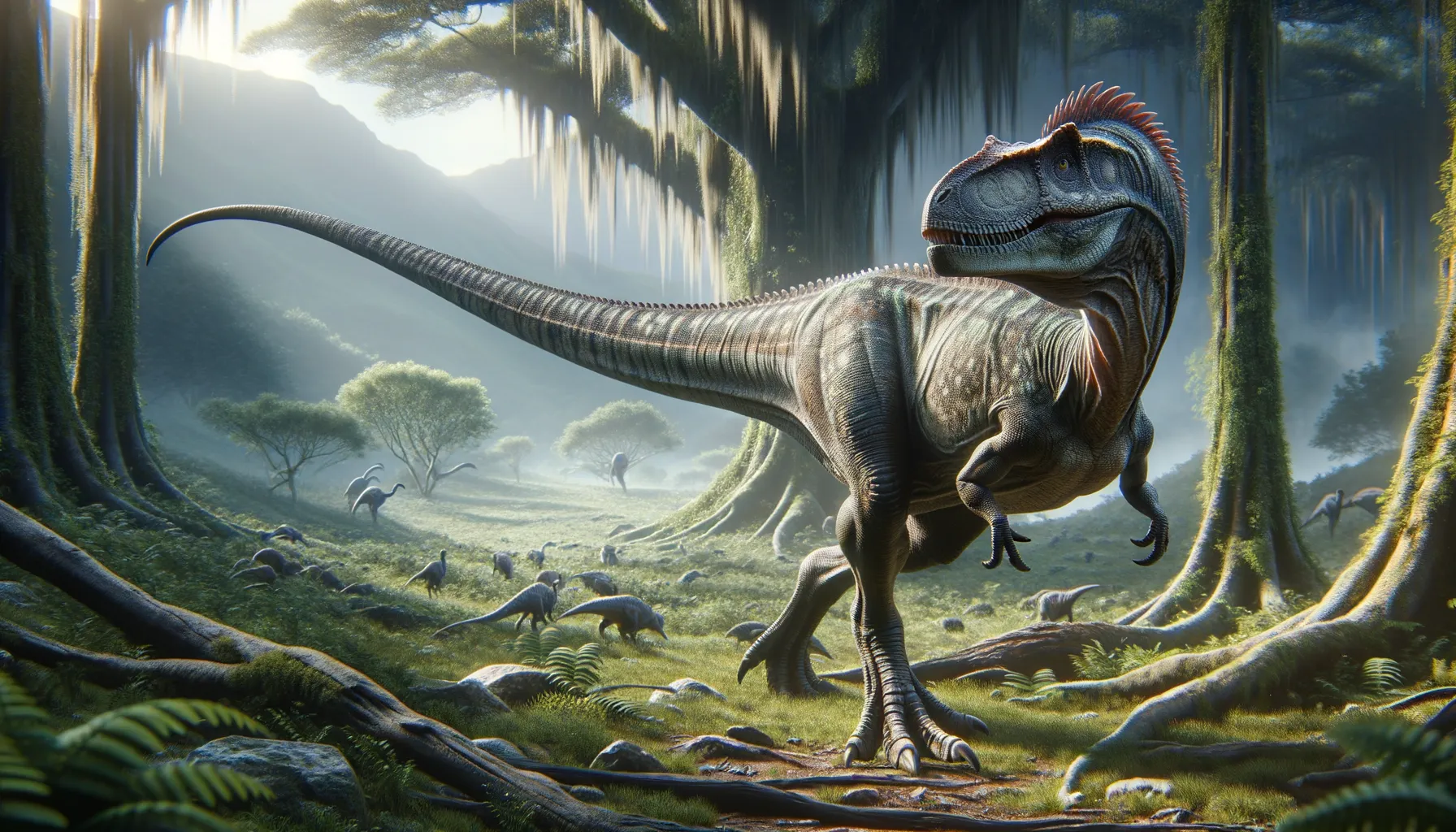
Therosaurus
Bridging the Dinosaur-Bird Evolution.
Period
Jurassic
Length
Around 8 meters from head to tail.
Height
Up to 3 meters at the hips.
Weight
Approximately 1,000 kilograms.
A notable theropod dinosaur, renowned for its unique adaptation traits, Therosaurus is a fascinating subject of study due to its significant evolutionary role. Known for its sleek posture and adaptive features, it bridges the evolutionary gap between non-avian dinosaurs and birds. With fossil remains scattered across various regions, Therosaurus contributes vital insights into prehistoric ecosystems and the sophisticated behaviors of ancient creatures.
Diet
Therosaurus primarily consumed smaller animals and could have included insect-like creatures, small amphibians, and lizards. Its teeth and possible beak-like mouth structure suggest a varied diet, adapting to available resources over time.
Hunting
With its relatively slow speed, Therosaurus likely relied on ambush tactics to catch prey. It may have used stealth and surprise, leveraging its environment for hunting successful strategies, perhaps seeking opportunities rather than chasing down prey.
Environmental challenges
Therosaurus lived in a dynamic ecosystem with fluctuating resources and competition from other dinosaur species. Climate variability could have made food resources unpredictable, requiring adaptability. Environmental changes might have influenced its evolution, driving physiological adaptations for survival.
Speed
Relatively slow-moving.
Lifespan
Estimated to be around 20-30 years.
First discovery
Uncovered in the western United States in the early 1900s.
Fun Facts
- Therosaurus is a theropod dinosaur known for its bird-like features.
- It lived approximately 150 million years ago during the Late Jurassic period.
- Fossil evidence suggests Therosaurus had feathers, indicating a close evolutionary link to modern birds.
- The name 'Therosaurus' means 'beast lizard' in Greek.
- Despite its fearsome name, Therosaurus is believed to have been an herbivore.
- Therosaurus fossils have been found in what is now North America.
- Its lightweight bones and feathers suggest that it might have glided or even flown short distances.
Growth and Development
Therosaurus likely underwent rapid growth in its juvenile stages to avoid predation. Its bone structure suggests periods of fast growth interspersed with slower phases as it matured. The transition from hatchling to adult required significant biological adaptation.
Habitat
Therosaurus thrived in dense forests and open plains, where it had access to varied food sources and cover for hunting. Its habitat provided both challenges and opportunities, influencing its physical and behavioral adaptations. Seasonal changes in the environment impacted its survival strategies.
Interaction with other species
Therosaurus coexisted with a variety of other dinosaurs, both herbivorous and carnivorous. Its interactions were likely a mix of competition for resources and predatory-prey dynamics. Fossil sites suggest a complex ecosystem where species interactions played a vital role in the evolutionary pressure on Therosaurus.
Natural lifespan
In the wild, Therosaurus faced threats that likely limited its lifespan to around 20-30 years.
Reproduction
Therosaurus likely laid eggs, possibly in communal nests to increase hatchlings' survival odds. Parental care patterns remain speculative, though some evidence suggests caring behavior might have existed. Clutch sizes varied and played a crucial role in offspring proliferation.
Social behaviour
Therosaurus might have exhibited both solitary and group behaviors, social dynamics driven by environmental and resource availability. Flock-like behavior could have enhanced hunting efficiency and protection from predators. Social structures potentially influenced individual fitness and reproductive success.
Fossil locations
Fossil remains of Therosaurus have been primarily found in North America, notably in the western United States. These findings provide substantial insight into its geographical distribution during the Jurassic period. Ongoing excavations continue to unearth valuable data contributing to understanding its historical habitat range.
